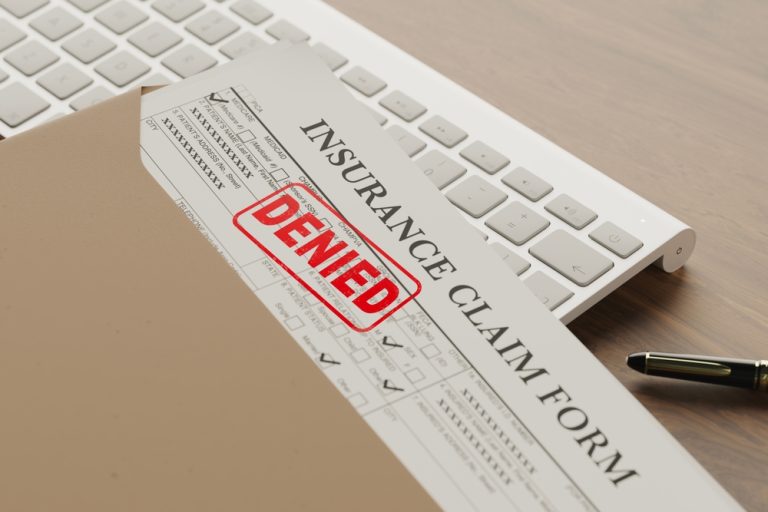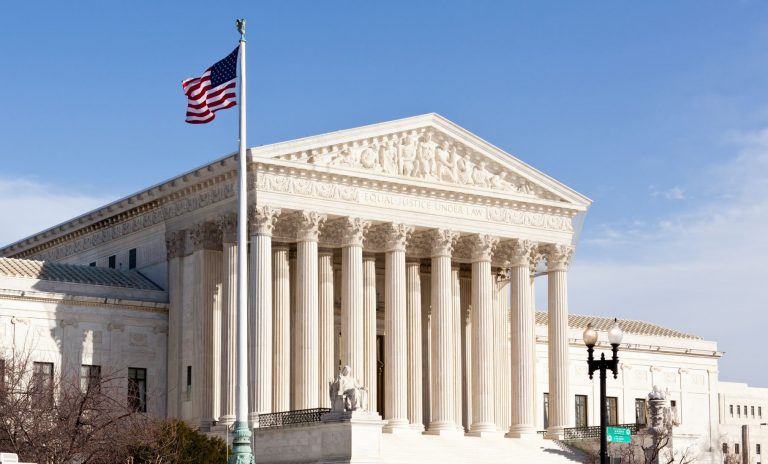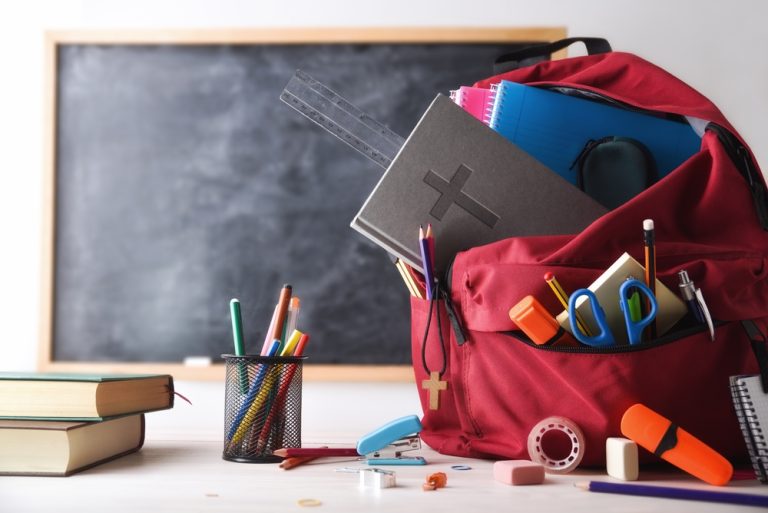Reducing Liability from Dram Shop Laws
Reducing Liability from Dram Shop Laws
Under common law, commercial establishments historically were not liable for selling or providing alcoholic beverages to individuals who became intoxicated and injured themselves or others. In the mid-1800s legislatures and courts began imposing liability in limited situations. Today, the legislatures and courts in the majority of states have abrogated the common law in an effort to “balance” the need to hold tortfeasors including drunkards accountable for the repercussions of their own voluntary intoxication with the desire to provide compensation to those they injure. This article provides an overview of dram shop laws and offers strategies for reducing the risk of civil liability to establishments imposed by the laws as well as strategies for defending these cases.
Dram Shop and Related Liability
Dram shop laws impose liability on commercial establishments that provide alcoholic beverages to certain adults or underage customers. Most dram shop defendants are bars, restaurants, or taverns that serve alcoholic beverages for on-premises consumption. However, at least some states impose liability on other proprietors, including convenience store owners, for serving minors or visibly impaired people under certain circumstances. See, e.g., Flores v. Exprezit! Stores 98-Georgia, LLC (Ga. July 5, 2011) (slip opinion).
Service to Adults
Thirty-five states and the District of Columbia impose liability on alcohol beverage licensees that improperly serve adults; 32 states by statute, three states and the District of Columbia through judicial fiat. In an era of increasing judicial activism, we expect other states to join the chorus, whether appropriate or not. In Maryland, for example, the legislature recently considered dram shop legislation for the first time in 20 years. The bill died in committee. Neither this nor case precedent stopped a circuit court judge from trying to change the law on his own. In refusing to dismiss a case involving a 10-year-old girl killed by a drunk driver, the judge argued,
[t]he facts of this case undoubtedly should serve as the impetus to adjusting Maryland jurisprudence on the topic of dram shop liability . . . . This court is of the opinion that while the Maryland legislature has not enacted dram shop legislation, it has not expressly prohibited it . . . . A bar owner who continuously serves drinks to intoxicated individuals and makes no attempt to ensure that the individual has alternative means home should expect that the intoxicated patron can get into an accident.
See Debating Dram Shop Laws: Judge Draws Line in the Sand on Alcohol Liability, Gazette.net (June 1, 2011). This case provides a cautionary tale to establishments in jurisdictions without dram shop laws. Although the judge will probably have his ruling reversed on an appeal, the establishment surely is paying significant legal fees and facing ongoing bad publicity. The message is simple: every establishment should serve responsibly, regardless of the law.
Dram shops laws across the country vary significantly in their scope and application. In the vast majority of states, laws hold a licensee liable for serving a “visibly intoxicated” person. Thus, liability revolves around a tortfeasor’s state at the time of service, not at the time of an incident. See, e.g., Faust v. Albertson, 222 P.3d 1208 (Wash. 2009). Some states only hold an establishment liable for serving a “known habitual drunkard.” In these states, it remains unresolved whether plaintiffs need to prove that improper, irresponsible service proximately caused injuries, or whether establishments are strictly liable for serving those they should not.
The majority of jurisdictions do not hold a licensee accountable for injuries that an intoxicated patron causes to himself or herself or to third parties that participated in, condoned, or facilitated the patron’s drinking unless the service is considered reckless. Further, many jurisdictions recognize special defenses such as engaging in “responsible business practices.” Some jurisdictions cap damages, while in others the jurisdictions expose establishments to exemplary or punitive damages.
Service to Underage Patrons or Minors
Forty-two states, including the 35 that impose dram shop liability for improperly serving adults, and the District of Columbia impose liability on licensees that serve underage customers or “minors.” Many of these state laws have short statutes of limitations. In most jurisdictions, a licensee is not held liable if it is shown an apparently genuine license indicating that the patron is of minimum drinking age. Additionally, some jurisdictions recognize a defense if an establishment engaged in responsible business practices or if a patron misrepresented his or her age.
Additional Related Liability
Although dram shop laws are designed to establish “exclusive” remedies for negligent service, they do not, as commonly believed, bar other causes of action or provide an absolute defense. For example, a proprietor may be held liable for violating a duty to safeguard customers from “extreme danger” while on a premises. See, e.g., Starling v. Fisherman’s Pier, Inc., 401 So.2d 1136 (Fla. Dist. Ct. App. 1981) (holding that a business had an affirmative duty to protect a drunk man who passed out on the business’s pier so that he would not fall into the ocean and drown), review denied, 411 So.2d 381 (Fla. 1981). Additionally, some states recognize a civil cause of action for negligence per se when a host violates criminal statutes, including service of alcohol to a minor or permitting an “open house party.” See, e.g., Newsome v. Haffner, 710 So. 2d 184 (Fla. Dist. Ct. App. 1998).
Dram Shop Liability in the Real World
Most cases arising under dram shop and social host laws are fairly straightforward. However, sometimes well-intentioned establishments and hosts create additional unexpected liabilities through the actions that they take to address problem drinkers.
Improper Refusal of Service
Some commentators suggest that servers exercise “extreme caution” when refusing service since refusal “may present its own challenges,” including antidiscrimination and Americans with Disabilities Act (ADA) lawsuits. See, e.g., D. Gursoy, C. Chi, & D. D. Rutherford, Alcohol-Service Liability: Consequences of Guest Intoxication, 30 Int’l J. Hosp. Mgmt. 714, 716 (2011). While that may be true, a licensee still must refrain from providing alcohol as required by law and should refrain from serving visibly intoxicated customers and habitual addicts. Accordingly, we recommend that licensees train staff to watch for changes in customer behavior, not just traditional signs of intoxication, and to how to refuse service courteously.
Improper Eviction
Licensees typically evict or remove underage patrons, patrons who become belligerent, or patrons who endanger themselves or others. Unfortunately, this may carry some risk, even when required by law. In several jurisdictions people have attempted to hold licensees liable for evicting intoxicated patrons.
In states without dram shop laws, the risk associated with eviction is minimal. See, e.g., Rodriguez v. Primadonna Co., 216 P.3d 793 (Nev. 2009). In Rodriguez, the court held that a proprietor who evicts a patron “is not required to consider [the] patron’s level of intoxication in order to prevent speculative injuries that could occur off the proprietor’s premises.” As the court explained, “individuals, drunk or sober, are responsible for their torts.” Accord McCall v. Villa Pizza, Inc., 636 A.2d 912 (Del. 1994). However, even in these states, or in analogous situations in which the dram shop laws may not apply, hosts may be held accountable if they facilitate tortious conduct. See, e.g., Simmons v. Homatas, 925 N.E.2d 1089 (Ill. 2010) (holding a strip club liable under common law negligence principles after employees evicted a customer, requested that the valet bring his car around, opened the car door, and ordered the patron to leave).
In states with dram shop laws, the risk associated with eviction can be substantial. See, e.g., Kramer v. Continental Cas. Co., 641 So.2d 557 (La. Ct. App. 1994). In Kramer, a motel allowed a group of high school students have a party during which underage attendees drank alcoholic beverages. After receiving numerous complaints, the employees ordered all non-registered guests to leave. The plaintiff complied, leaving in car driven by a student who drank alcohol at the party. The student, who had a blood-alcohol concentration (BAC) of 0.15, lost control of the vehicle and crashed. The plaintiff was seriously injured and sued the motel, among others. An appellate court found that the motel’s history of providing a venue for underage drinking facilitated the dangerous conduct and giving rise to a duty of care that was violated when the hotel evicted the partygoers. The court explained that the motel’s “actions of throwing out intoxicated under age teenagers onto the motoring public was the worse [sic] possible option the [motel] did exercise, after allowing them to get intoxicated there. We find this conduct unreasonable.” Although the court seemingly limited the case to situations in which an innkeeper engages in outrageous conduct, a licensee should take care to discourage intoxicated persons evicted from their establishments or homes from driving and strongly consider requesting assistance from law enforcement when appropriate.
Negligent Supervision
Responsible licensees routinely monitor their customers’ drinking. Can they be held accountable if they do so negligently? The answer is less than clear. See, e.g., Bauer v. Nesbitt, 969 A.2d 1122 (N.J. 2009), reversing Bauer v. Nesbitt, 942 A.2d 882 (N.J. Ct. App. 2008). In Bauer, the decedent and an underage friend had some drinks together before going to the subject establishment. Once there, they ordered food and drinks. The friend ordered soda, but the decedent ordered beer and spiked his friend’s drinks. By the time they left, both of them were extremely intoxicated. The decedent was killed when his friend lost control of the vehicle that they were riding in. The decedent’s estate sued the establishment. A trial court dismissed the action on the basis that the establishment did not serve the friend alcohol, and the decedent’s estate appealed. An appellate court reversed, holding that the establishment was liable because it (1) had a duty to ensure that the decedent “was driven home by a sober companion,” and (2) had a duty to protect the visibly intoxicated friend from injuring himself or others. The court suggested that the establishment’s breach of the latter duty constituted negligent supervision. Not surprisingly, this case caused significant consternation in the hospitality industry since it imposed a seemingly impossible burden and exposed licensees to limitless liability. However, the New Jersey Supreme Court reversed. The New Jersey Supreme Court noted that the purpose of the dram shop law was to balance the needs of licensees to obtain affordable insurance and the victims’ right to recover by limiting causes of action to negligent or illegal service. The court held that the dram shop law held establishments responsible for their own actions and did not impose a duty upon them to monitor each and every guest, let alone those who were not served alcohol. While the New Jersey Supreme Court ultimately resolved the issue in the establishment’s favor, the case trajectory reflects real risk. With a different set of judges the result obviously could have been quite different.
Insurance and Indemnification
Every licensee that serves alcohol should obtain appropriate insurance. General liability policies generally exclude coverage for negligent service and, in any event, only provide coverage for harms occurring on an establishment’s premises. A licensee should obtain liquor liability policies that cover the licensee and the licensee’s employees for
- Assaults and batteries occurring on premises;
- Lawsuits brought by third parties who are injured off premises by a patron served at the establishment;
- All available types of damages ranging the gamut from bodily injury to mental anguish;
- Employee drinking, although some insurance companies will exclude coverage for this; and
- Defense costs.
- Whether or not a licensee can find such expansive coverage may depend on the jurisdiction.
In addition, a licensee should consider purchasing insurance that provides discounts for having a positive track record and participating in safety training. Establishments that permit others to host events on their premises, such as hotels or motels, should strongly consider requiring the hosts to indemnify them if the hosts intend to serve alcohol. In such cases, they should also consider requiring the hosts to provide proof of insurance.
Reducing the Risk of Liability
Establishments can protect themselves in a variety of ways. A licensees should in particular do the following.
- Become familiar with the laws, regulations, and standards of care for in the respective state or states and follow them.
- Obtain state certification as a responsible vendor when available.
- Draft written policies and follow them. A good policy should highlight an establishment’s commitment to safe and responsible service, establish responsible business practices, describe service policies and procedures, identify the people responsible for implementing them, establish a “chain of command,” and specify penalties for violations.
- Provide training to staff by certified trainers. Staff should attend training regularly to ensure that they know how to identify intoxicated customers, avoid over-serving, understand the importance of responsible service, and remain current with the law. Staff should learn how to detect false or altered identification and to refrain from over pouring. To achieve the best results, an establishment should partner with independent outside providers to provide training, including private companies, nonprofit organizations, or both types that can ensure that licensees meet industry standards.
- Supervise and monitor employee compliance with policies and procedures. A licensee should hire outside monitors to pose as customers, also known as “mystery shoppers” or “spotters,” to audit employee compliance.
- Include compliance with responsible service policies in employee evaluations and otherwise hold employees accountable.
- Prohibit employees from drinking alcoholic beverages while working and from arriving for work under the influence of alcohol.
- Ask employees to avoid engaging in behaviors that encourage customers to overindulge and to adopt behaviors intended to counteract overindulgence. For example, encourage eating and the consumption of nonalcoholic beverages, limit happy hours, provide slower service for those who appear to becoming intoxicated, and prohibit contests that aware prizes to staff who serve the most alcohol.
- Require that anyone who appears to be under the age of 30 produce proper proof of age.
- Refuse service to known habitual drunkards and visibly intoxicated patrons.
- Remove customers who become belligerent or drunk, but do not facilitate or encourage them to drive away. A licensee and the licensee’s employees should offer to call belligerent or drunk customers a cab.
- Encourage designated drivers, post signs advertising a licensee’s willingness to call taxis, and otherwise promote safe transportation alternatives for customers who should not drive.
- Document and track all incidents. This is important primarily for two reasons. First, many people learn more from failures than successes. By analyzing incidents, an establishment can appreciate the dangers of improper service better and reduce the likelihood of repeating mistakes. Second, contrary to what some would have the public believe, the vast majority of establishments have few incidents. Documentation showing that an establishment has few, if any, problems due to inappropriately serving customers who the establishment should cut off can become invaluable to successful defense during a trial.
- Publicize responsible business practices to customers and members of the community. Obtain and maintain proper insurance.
Practitioners also should take advantage of the numerous national organizations that provide excellent resources on licensee liability, including the American Beverage Licensees, http://www.ablusa.org, the Responsible Hospitality Institute, http://www.rhiweb.org) and the Responsible Retailing Forum, http://www.rrforum.org). Following these suggestions reduces risk, promotes customer and public safety, and facilitates mounting a good defense if someone is harmed.
Defending a Dram Shop Case
To craft the best possible defense when defending an establishment in a dram shop case a defense attorney will want to understand the applicable statute of limitations, investigate a case carefully, use motions in limine to exclude evidence strategically, and draw from some other specific trial tactics such as ferreting out potential jurors’ positions on individual personal responsibility.
Statutes of Limitations
The statutes of limitations of dram shop laws obviously vary dramatically from state to state. These laws often contain limitations of actions significantly shorter than those in general negligence statutes. Review the relevant statutes and ensure that plaintiffs filed lawsuits timely since some states’ laws require that plaintiffs formally initiate actions in a matter of months.
Case Investigation
The investigation phases of cases often determine whether or not defense attorneys will win or lose the cases. Defense attorneys must initiate their investigations as quickly as possible because memories fade, evidence disappears, and witnesses, including hospitality staff, tend to be transient. A defense attorney should inspect an establishment. Many establishments have cameras that may provide invaluable evidence. Unfortunately, an establishment generally will maintain videos only for a short period of time, typically 30 to 90 days. A defense counsel should obtain copies of videos if available and a client’s policies concerning preservation of video evidence.
A defense counsel also should obtain and review all policies and procedures related to the service of alcoholic beverages, retrieve all paperwork related to all transactions involving a tortfeasor, not just those from the day or night in question, and interview management and staff. It is essential to understand the service policies and to determine whether staff
Knew the law and their responsibilities under it;
Received training in responsible service, and if so, how and from whom;
Freely poured or measured alcohol when making drinks or used a machine to automatically pour drinks;
- Offered customers food and nonalcoholic beverages;
- Monitored customers’ drinking;
- Knew how to identify an intoxicated person;
- Ever refused service to anyone or evicted anyone because he or she was impaired;
- Knew a tortfeasor before an incident and how well, meaning was he or she a “regular”? If so, what types of drinks did the tortfeasor prefer? Did the staff ever see the tortfeasor intoxicated? How did the tortfeasor appear when intoxicated?
A defense counsel also should ask detailed questions about the day or night of the incident, including
- How many customers were present the day or night of an incident?
- What was the occupancy limit?
- How many staff members were present?
- When did the tortfeasor arrive?
- Did you know him or her?
- Was anyone with him or her? And if so, who? Did you know them?
- Who served him or her? And what training and experience did that person have?
- What did the tortfeasor eat and drink and over how long?
- Did you monitor the tortfeasor’s drinking and condition? How carefully? Did you see anything that concerned you? Did he or she appear intoxicated? Did the tortfeasor have a flushed face, bloodshot eyes, or slurred speech?
- Who paid for the items and how? A counsel should obtain all receipts.
- Did the tortfeasor pay the bill? Did he or she have any problem producing the right amount of cash or a credit card?
- Was the tortfeasor able to get up and walk out without help?
- How did the tortfeasor appear before, during, and after receiving the service?
- Did anyone offer to call a cab for the tortfeasor?
- When did the tortfeasor leave?
A defense counsel also should determine if a tortfeasor visited multiple establishments. Some establishments hold contests for staff or otherwise reward them for selling alcoholic beverages, a risky practice from a liability standpoint, to say the least. A counsel should determine whether that took place on the day or night of a tortfeasor’s visit.
The police typically investigate crashes, and, when appropriate, a prosecutor will prosecute particular parties. A defense attorney should obtain all public records from a police investigation and a criminal case, including the police reports, the court file, and the prosecutor’s file, preferably before deposing a tortfeasor. Officers often investigate a driver in detail. Their reports may provide valuable information critical to a case.
A defense attorney should hire an accident reconstructionist and a forensic toxicologist to analyze the police report information. These experts may be able to use the information to identify alternative or confounding causes, such as medication or drugs, equipment failure, or failing to use seatbelts, verify fault, including all of the parties’ comparative negligence, and estimate the tortfeasor’s blood-alcohol content at different points in time.
And, as in any other type of case, a defense counsel should engage in discovery. If a tortfeasor or a third party was treated by a fire-rescue team or hospitalized, a counsel should obtain the treatment records. Hospitals often test patients for alcohol or drug use.
Further, a counsel should depose a tortfeasor and a third party as quickly as possible before their memories fade. When deposing a tortfeasor, a counsel should vigorously question him or her on the same issues discussed above. A counsel also should thoroughly explore a tortfeasor’s drinking habits. For example, counsel should ask a tortfeasor the following questions:
- How often do you drink?
- Do you ever drink alone?
- How many drinks do you have a week?
- How many times a week do you have more than two drinks? Then repeat the question increasing the number of drinks.
- Have you ever consumed alcohol while working?
- What is your favorite drink?
- Do you believe that you have a drinking or drug problem?
- Has anyone ever suggested that you reduce your drinking?
- Has anyone ever told you that you have a drinking a problem?
- Has anyone ever recommended that you obtain treatment for a drinking problem?
- Have you ever considered going to Alcoholics Anonymous (AA) or any type of treatment?
- Have you ever gone to an AA meeting or obtained any kind of treatment?
Finally, a counsel should thoroughly explore the context and events leading to an incident, and the incident itself. For example, counsel should ask,
- How tall are you?
- How much did you weigh on the day or night of the incident?
- When was the last time that you slept before the incident? Where? How long? Did you feel rested?
- Did you eat before or while drinking? If not, when was your last meal? What did you eat? How much did you eat? Were you full?
- What time did you start drinking?
- What did you drink? Then ask when each drink was consumed and how quickly.
- How much did you have to drink? As this question for each type of drink.
- Where did you drink? A counsel must determine if a tortfeasor consumed alcohol at any location other than the client’s or host’s establishment.
- When did you stop?
- If someone poured or made a drink for the tortfeasor, ask, do you know what types of alcohol are in that drink? Did you see the person pour it? Did he or she measure the pour or use a machine to assist him or her? Did he or she pour more than a shot glass’s worth of alcohol?
- Was anyone with you? Explore this for each issue.
- Did anyone tell you that you shouldn’t have more to drink?
- Did anyone refuse to serve you?
- Did you feel the effects of alcohol?
- Did you think that you were drunk?
- Did anyone else tell you that they thought you were drunk?
- Did anyone tell you that you shouldn’t drive?
- Did anyone offer to call you a cab or to give you a ride?
Motions in Limine
Using motions in limine strategically to exclude certain evidence can shore up a defense, specifically prior bad act evidence, character evidence, blood alcohol content evidence, and subsequent remedial measure evidence.
Evidence Concerning an Establishment’s or Host’s Prior Bad Acts
A plaintiff’s attorney will often attempt to introduce prior bad acts and other types of evidence attacking an establishment or a host’s character or reputation. Examples include
- Evidence regarding past parties or other raucous events;
- Specials on alcoholic beverages on any occasion other than the incident date;
- Contests that the establishment or host held for servers, customers, or guests on any occasion other than the incident date;
- Prior incidents or lawsuits; if they exists, council should be careful about “opening the door” by arguing that the establishment or host has good character.
Courts generally will not admit these types of evidence unless the offering party can prove “habit.” Proving habit is extremely difficult. See, e.g., Verni v. Harry M. Stevens, Inc., 903 A.2d 475 (N.J. Ct. App. 2006). In Verni, the tortfeasor attended a football game at Giants Stadium. He tailgated before entering the stadium. During the first half of the game he purchased two beers and became “shit-faced.” He bought several more 16-ounce beers, tipping the server an extra $10 “to bypass the stadium’s two-beer limit.” He bought and smoked some marijuana in the spirals before leaving the game. Later that evening, he seriously injured a mother and her two-year-old daughter when he swerved across a lane of traffic and struck their car. Blood tests revealed that the tortfeasor’s blood-alcohol content was .266 half an hour after the crash. During the trial, the plaintiff’s attorney introduced a great deal of evidence about the game’s “culture of drinking,” including testimony that many fans attended games while extremely intoxicated, stadium employees “violated the applicable industry standard of care in failing to properly train their employees by requiring them to be TIPS certified,” and employees regularly served beer to visibly intoxicated people. The jury awarded compensatory and punitive damages exceeding $109,000,000. On appeal, the court reversed finding that much of the evidence was inadmissible.
The Verni court recognized that “‘before a court may admit evidence of habit, the offering party must establish the degree of specificity and frequency of uniform response that ensures more than a mere ‘tendency’ to act in a given manner, but rather, conduct that is semi-automatic’ in response.’” (quoting Thompson v. Boggs, 33 F.3d 847 (7th Cir. 1994). The court ruled that the trial court erred when it admitted character evidence and evidence
- Of wrongful hiring, training or supervision;
- That fans engaged in rowdy behavior while attending the games;
- That fans often became drunk because the plaintiffs could not show that they became intoxicated because they were served alcohol at the stadium; and
- Of specific service violations.
The court also excluded evidence that the concessions contractor violated alcohol service policies over the course of years because, while marginally relevant, the probative value was substantially outweighed by the unfair prejudicial value.
Evidence of a Tortfeasor’s Character and Habits
In states where establishments are only responsible for serving visibly intoxicated patrons, an attorney should move to exclude evidence of a tortfeasor’s drinking habits and history because they are irrelevant. In jurisdictions where establishments are liable for serving habitual addicts, this evidence is admissible because it establishes an element of the claim. In these jurisdictions, a counsel should consider stipulating that the tortfeasor was a habitual addict and move to exclude this highly prejudicial evidence. In such a case, counsel could simply argue that the establishment did not know the person was a habitual addict and/or that the service was not a proximate cause of the injuries.
Blood Alcohol Content Evidence
In cases involving motor vehicle accidents, police often will conduct tests to determine the blood-alcohol content of anyone whom they suspect drove under the influence of alcohol (DUI). Accordingly, a tortfeasor’s blood-alcohol content at a particular point in time often is known. Courtesy of CSI and similar television shows, the public has been misled to believe that forensic testing is infallible and conclusive. This misunderstanding can make a tortfeasor’s blood-alcohol content devastating to a defense. Blood-alcohol content changes significantly over time. It takes 30 to 180 minutes for a person to “fully absorb” the alcohol that he or she consumes, depending largely on how much food he or she had in his or her stomach. Thus, a person may become impaired after leaving an establishment or a house. This is problematic because the issue in dram shop cases revolves around a tortfeasor’s condition at the time of service or drinking.
Plaintiffs’ attorneys often hire experts to estimate “blood-alcohol content at the time of service, sometimes describing this as “relating blood-alcohol content back to the time of service,” through a process called “retrograde extrapolation” to establish relevance. This process, however, is far from perfect. To reach a reasonable opinion, experts need information about
- A drinker’s sex, age, height, and weight;
- The time that he or she started and stopped drinking;
- The drinking pattern;
- The type of alcohol that the drinker consumed and the amounts that he or she consumed of each type; and
- The time and the amount of food that the drinker consumed.
Even with this information, enough uncertainty remains that honest experts typically express their opinions using broad ranges.
Regardless of whether an expert testifies on and estimates blood-alcohol content at the time of service, a defense counsel should move to exclude blood-alcohol content results. In cases in which someone drank quickly, drank right before leaving, when a significant amount of time elapsed between the time of drinking and the time of the test, or any combinations of the three, a counsel has a reasonable chance of prevailing. Additionally, a defense counsel should move to exclude mentioning the .08 legal limit for criminal liability. The legal limit has no probative value and, after years of public service advertisements, most jurors probably believe that everyone over the legal limit was substantially and visibly intoxicated or inappropriately served by an establishment per se.
In cases in which a tortfeasor’s blood-alcohol content was never measured scientifically, a plaintiff’s attorney may hire experts to estimate the tortfeasor’s blood-alcohol content based on the factors described above. In most cases, such estimates are extremely speculative; in virtually all cases, defense counsel should move to exclude them.
Subsequent Remedial Measure Evidence
Many establishments respond to dram shop suits by changing their procedures or otherwise imposing subsequent remedial measures. Defense counsel should move to exclude this evidence.
Other Trial Tactics
In jurisdictions where a counsel can question potential jurors, an attorney must question prospective jurors about their attitudes concerning alcohol, alcoholism, drinkers, bars, and the like. At the very least, a counsel should strongly consider striking venire persons who do not drink, think little of those who do, don’t like bars, and have been involved in incidents with impaired people, among other things. Ideally, a defense counsel will want least some jurors who strongly believe in taking personal responsibility while exercising caution to avoid exposing such people since a plaintiff’s counsel surely will attempt to strike them.
In most cases, a defense counsel should develop a theme centered on personal responsibility and place blame on a tortfeasor. The argument becomes even stronger if a plaintiff also was drinking even if the plaintiff did not cause the accident.
A defense counsel also must humanize an establishment. Jurors need to understand that businesses and parties are run or held by people exactly the same as them. In jurisdictions where engaging in responsible business practices is a defense, a counsel should emphasize all of the steps that an establishment took to avoid serving someone irresponsibly and linking the steps to the establishment’s commitment to social responsibility.
As previously noted, an establishment’s character is irrelevant and inadmissible. Still, a plaintiff’s counsel will almost assuredly attempt to paint an establishment as the Mecca of hedonism. A defense counsel should counter that image by presenting management and staff or hosts in the most professional and responsible manner possible and by introducing photographs of the establishment showing that it is clean, well lit, and organized.
A counsel should present as much evidence as possible showing that the tortfeasor was not visibly impaired even in states that prohibit serving habitual addicts regardless of intoxication level. Even in these states, jurors are less likely to hold an establishment responsible if they do not believe that the establishment knowingly contributed to the harm.
Conclusion
Laws subject licensees to significant and varied forms of liability in particular circumstance. Defense counsel can serve their clients best by familiarizing themselves with the applicable laws and advising their clients how they can reduce their risks and avoid liability, rather than simply handling claims.






